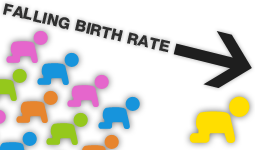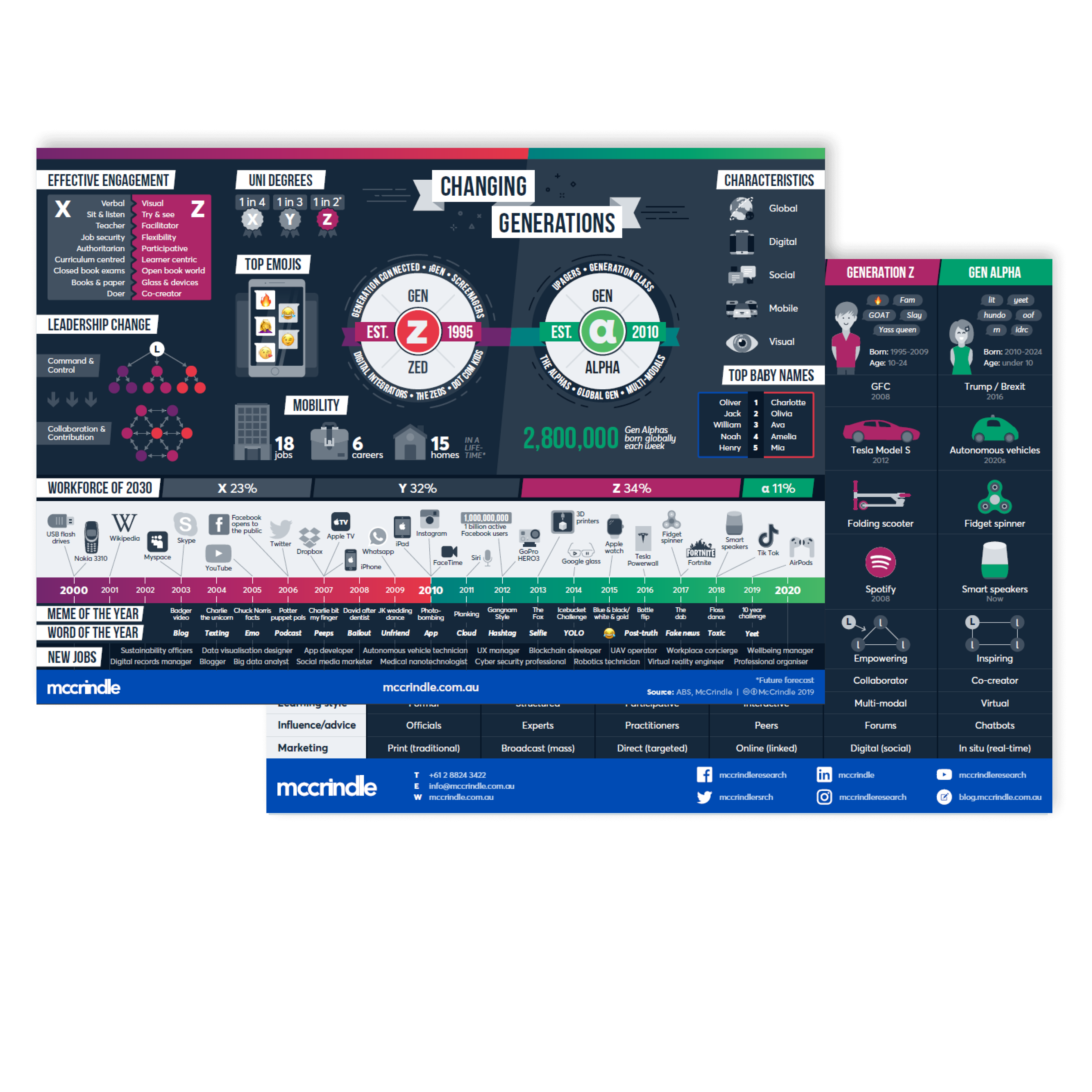Youth In Australia: A Demographic Analysis during National Youth Week

National Youth Week, held 5-14 April 2013, is a chance for young people, aged 12 to 25, to share ideas, attend live events, have their voices heard, and showcase their talent. It is a chance for the local and broader community to celebrate the contributions of young people. This year’s theme, “Be Active. Be Happy. Be You.,” encourages young people to speak up on their issues and the things concerning them, giving them a voice of acceptance and respect in their local areas.
At McCrindle Research, we have compiled a demographic snapshot of young people aged 12 to 25 in Australia and presented a face of Australian youth.
Click here to download the PDF file
Demographic Snapshot of Today’s & Tomorrow’s Youth
Currently there are 4,280,322 persons between the age of 12 to 25 in Australia – that is, 18.6% of our population. There are 109, 260 more males than females in this age group, with males comprising 51.3% of the 12-25 population, and females making up 48.7%.
There are 151,023 more young people aged 12 to 25 than 5 years ago, in 2008, although as a percentage of the total population it has decreased from 19.4% to 18.6%.
Population Changes into 2020 and 2028
While young people in Australia make up a significant portion of our population, we are seeing an increase in the percentage of our population that is over 60, and a decreasing percentage of population that is under 20. In 2008, 26.0% of our population was under 20, and 18.5% of our population was over 60. Today, in 2013, 25% of our population is under 20, and 19.6% of our population is over 60. Based on these current demographic trends, by 2028, for the first time in Australia’s history there will be more people aged 60 than aged under 20.
This is not to say that the rate at which we are growing is declining – in fact, quite the opposite. With over 300,000 births taking place every year and Australia about to hit 23 million this month, Australia’s population is growing faster than ever. As our population grows, however, the age of our population is increasing and the proportion of our population between the ages of 12 to 25 is decreasing. In 2020, only 17.5% of Australians (4,419,758 out of a total population of 25,288,090) will be aged between the 12 and 25 (down from 18.6% today).
First of the New Millennium Generation
Today’s emerging teenager, aged 13, is part of Generation Z – the first generation of the new millennium – was born in the year 2000. As a new millennial citizen, today’s emerging teenager was born in the time that John Howard was Australia’s prime minister, Sydney hosted the Summer Olympics, the Goods and Services Tax was introduced nationally, the Airport Rail Link opened in Sydney, and Popstars, the first Australian reality TV show, aired on national television.
His Name is Joshua, Her Name is Jessica
The most popular boys name given to babies in 2000 was Joshua. Today the most popular name is Jack (Joshua is 12th). In 2000, Jessica was the most dominant girl’s name (today it is Charlotte, with Jessica now ranked at 27th).
Born in an Era of a Falling Birth Rate
 Joshua was born at a time in which Australia’s birth rate was falling. Leading up to the year 2000, Australia’s total fertility rate had been on the decrease since 1990, with 1.7 babies being born per woman. This trend reversed in the early 2000s and we are currently in the midst of another ‘baby boom,’ with 1.9 babies born per woman in the year 2011 and the numbers steadily increasing.
Joshua was born at a time in which Australia’s birth rate was falling. Leading up to the year 2000, Australia’s total fertility rate had been on the decrease since 1990, with 1.7 babies being born per woman. This trend reversed in the early 2000s and we are currently in the midst of another ‘baby boom,’ with 1.9 babies born per woman in the year 2011 and the numbers steadily increasing.
Joshua’s Parents
Joshua’s parents are Generation X – the 21% of Australia’s population born between 1965 and 1979. If Joshua was the first-born child, his mother was born in 1970 and had him when she was 29.8 years old. She is now going on 43 and trying to get her head around her work-life balance: perhaps she is pursuing entrepreneurial ambitions, planning on spending more time with her family, or working towards further study pursuits.
Joshua’s Future Education Employment
 Joshua’s generation, Gen Z (those born between 1995 to 2009) is the first fully global generation, shaped by the 21st century, connected through digital devices and engaged through social media. Joshua will pursue further education and training to go on to university, but education is no longer a life-stage for him – it is a life-long reality. Based on today’s average tenia, today’s vocationally mobile, entrepreneurial, and truly global Generation Z will have 17 employers across 5 separate careers, working in jobs that don’t even currently exist.
Joshua’s generation, Gen Z (those born between 1995 to 2009) is the first fully global generation, shaped by the 21st century, connected through digital devices and engaged through social media. Joshua will pursue further education and training to go on to university, but education is no longer a life-stage for him – it is a life-long reality. Based on today’s average tenia, today’s vocationally mobile, entrepreneurial, and truly global Generation Z will have 17 employers across 5 separate careers, working in jobs that don’t even currently exist.
Click here to download the PDF file.
For media commentary contact us on 02 8824 3422 or at [email protected]




